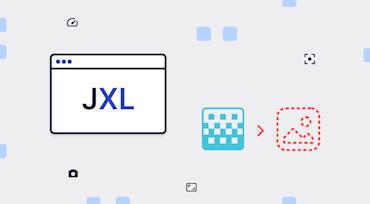As online interactions multiply exponentially, visual media has become the most significant venue for delivering the benefits of what used to be in-person contacts. With this in mind, companies have completely shifted their digital strategies for consumer experiences, taking a media-first approach in how they interact and engage.

Cloudinary supports a wide range of SDKs, many of which have been around for quite some time now. The PHP SDK was initially released in 2012, nine years ago, and much has changed since then with regard to programming languages and development concepts. This means that the SDKs need a refresh in order to be aligned with the latest standards and best practices, also to comply with the current language standards and syntax usage.

Many Cloudinary users desire a UI for tasks like creating text overlays for images, which they then embed on webpages or download for marketing campaigns. Generating such overlays with the Cloudinary Media Library UI involves a bit of a learning curve, especially if they require multiple fonts or text lines, which even experienced users might find challenging to implement.

When the JPEG codec was being developed in the late 1980s, no standardized, lossy image-compression formats existed. JPEG became ready at exactly the right time in 1992, when the World Wide Web and digital cameras were about to become a thing. The introduction of HTML’s <img> tag in 1995 ensured the recognition of JPEG as the web format—at least for photographs. During the 1990s, digital cameras replaced analog ones and, given the limited memory capacities of that era, JPEG became the standard format for photography, especially for consumer-grade cameras.

In this age of most sites being static, a frequently asked question is how much dynamic functionality you can derive from Jamstack. The answer is a lot because you can incorporate reusable APIs in that architecture and leverage serverless, back-end-oriented functions with no back ends in place.

Progressive image decoding is an excellent way in which to accelerate page loads and hence improve the web-browsing experience. This post explains why and elaborates on the recent developments for that approach.

As defined by Amazon Web Services (AWS), Amplify is a set of products and tools with which mobile and front-end web developers can build and deploy AWS-powered, secure, and scalable full-stack apps. Also, you can efficiently configure their back ends, connect them to your app with just a few lines of code, and deploy static web apps in only three steps. Historically, because of their performance issues, managing images and videos is a daunting challenge for developers. Even though you can easily load media to an S3 bucket with AWS Amplify, transforming, compressing, and responsively delivering them is labor intensive and time consuming.

While COVID has affected most businesses, it has been particularly hard on those that sell products for the physical ‘brick and mortar’ world. One company that literally fits that bill is our Australian customer James Hardie, the largest global manufacturer of fibre cement products used in both domestic and commercial construction. These are materials that its buyers ideally want to see up close, in detail. When customers have questions, they expect personal service.

Part 1 of this post defines the capabilities of an enhanced Gravatar service, which I named Clavatar, and describes the following initial steps for building it:
This post, part 2 of the series, explains how to make Clavatar work like Gravatar and to develop Clavatar’s capabilities of enabling requests for various versions of the images related to user accounts.

The advent of web development since 25 years ago has given birth to an abundance of online services that help developers build apps efficiently and smoothly. Gravatar is a shining example of such a service. Built by WordPress, Gravatar generates globally recognized avatars. Fun fact: 80 percent of Gravatar users first came across that service when reading a WordPress blog.
